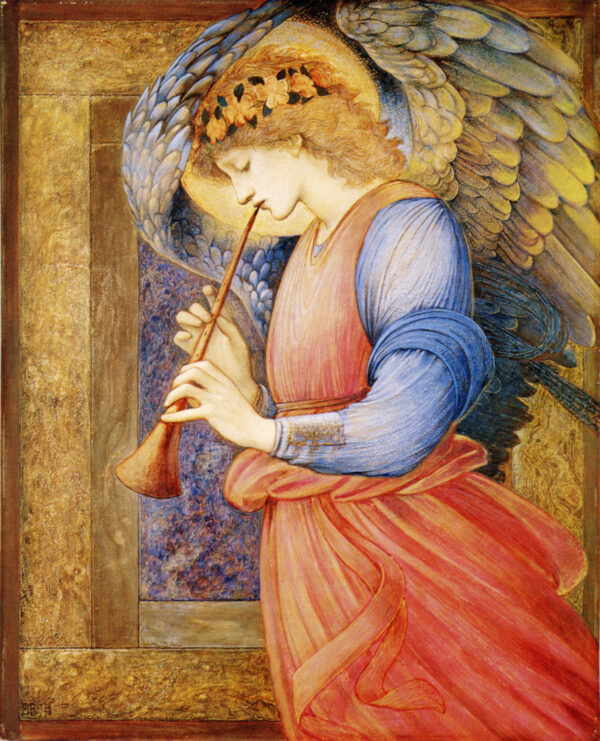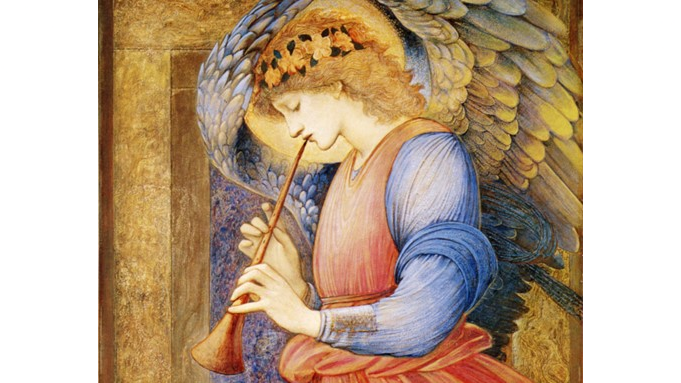‘An Angel Playing the Flageolet’
Some famous writers have played a woodwind instrument known as the flageolet: Hector Berlioz, Frederic Chalon, Samuel Pepys, and Robert Louis Stevenson. Composers such as Henry Purcell and George Frideric Handel wrote pieces for it.
Musicians began to play this recorder-like instrument in the 1700s in France, and it began to be known as the French flageolet. The instrument is part of the fipple flute family, with four tone-holes on the front and two on the back.
Edward Coley Burne-Jones’s (1833–1898) “An Angel Plays a Flageolet” (1878) portrays a celestial being before an open window playing the instrument, as if she is playing for those outside her heavenly realm.
Heavenly Realm
The angel bends forward gracefully near a window. She seems to move with her playing, her iridescent gown of blue and red flowing in time with the melody. Shimmering blue and gold wings also dance and sway along. Her crown of flowers and halo focus the viewer’s attention on her features that are intent on her playing. Outside the golden window, a textured blue could be the sky below heavenly realms.
The artist used this angel motif in several media: a stained-glass window, a small set of three angels in oil, and a larger set in tempera, as well as drawings. The drawings were completed in watercolor and gouache, an opaque watercolor. This larger painting was completed in tempera and gold paint on paper which Burne-Jones mounted on a canvas.
Tempera was generally used in the Middle Ages until the use of oil paint became popular in the Renaissance. Tempera is a stable medium made by mixing pigments with egg yolk and water. “With the use of gold and tempera in this and other pictures, we can witness the vibrant colours and tones that help to enhance the heavenly setting of this Angel,” notes The History of Art website.
Burne-Jones was drawn to the purity and simplicity of Medieval art, especially the great stained glass windows of Gothic cathedrals. He produced a stained-glass window for a parish church in Lyndhurst, Hampshire in 1862–1863, which inspired him to make his watercolor drawings and tempera paintings.
There is a difference in the shape of the instrument in Burne-Jones’s painting from one played at the time. The artist shaped the flageolet to fit the tracery trefoil of a stained-glass window that he previously designed.
The instrument appears to be more like a medieval trumpet; perhaps the artist intended this to be what the flageolet looks like in heaven. With his ethereal flute, Burne-Jones might be telling us that a flageolet played in heavenly realms carries a more heavenly sound, is more easily played, and is more beautiful than anything in the mortal realm.
For his own reasons, Burne-Jones kept this painting in his studio for 10 years before he gave it to an art dealer, where it immediately sold to George Holt, a Victorian ship owner, merchant, and art collector from Liverpool.
Burne-Jones worked his paintings diligently, focusing on every detail of the artwork, and his work was praised for the technical skill he put into his art.





